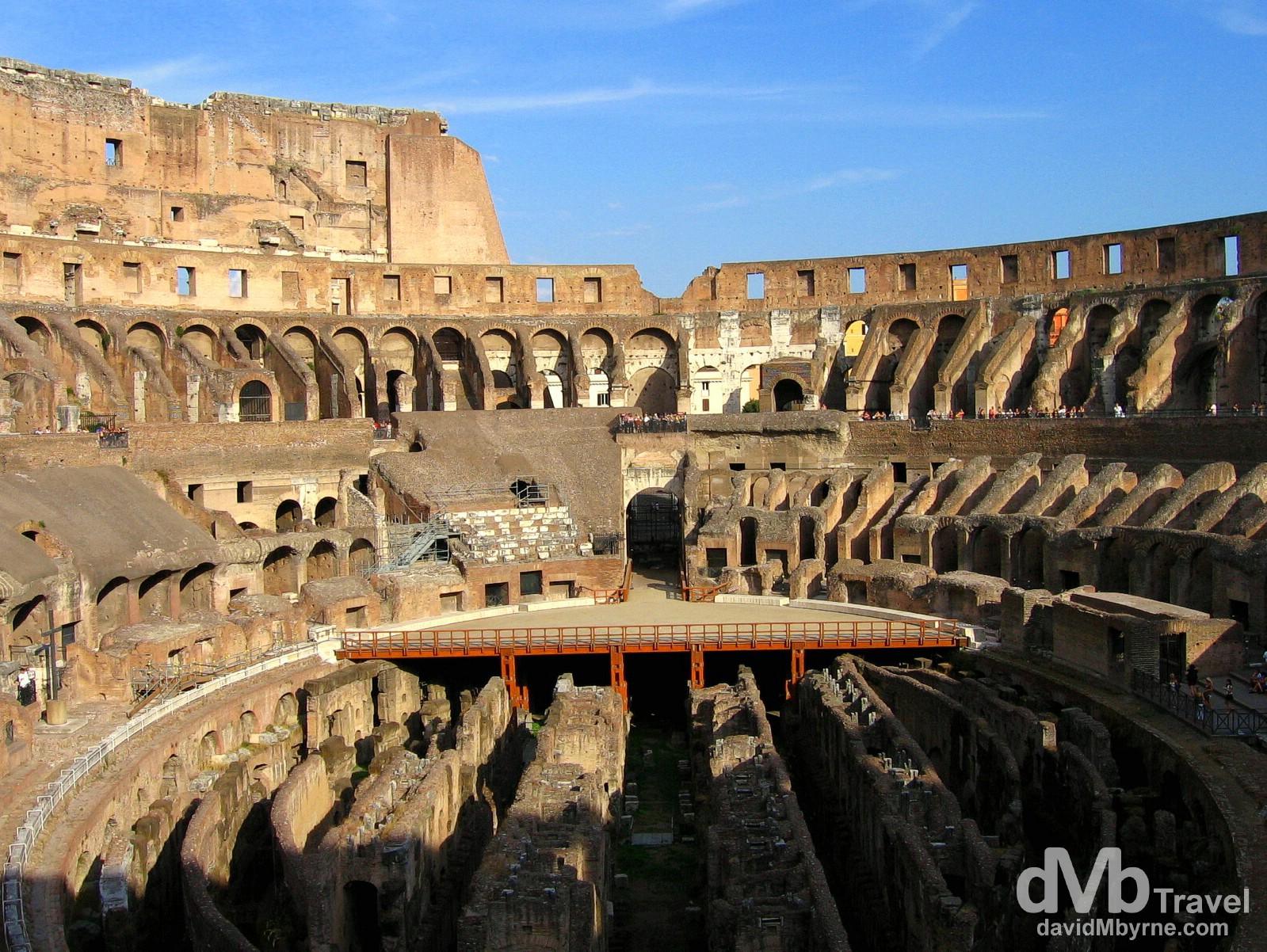Rome, Italy
The Cradle Of Modern Civilisation, An Open-air Museum Housing Some Of The Major Monuments Of Antiquity
The Forum, Rome, Italy. September 2, 2007
There’s history, & then there’s the Italian capital of Rome. Founded according to legend by Romulus and Remus in 753 BC, this is where modern civilisation as we all know it was founded. Yep, right here. Rome was first the centre of the Roman Republic, then of the Roman Empire, and it became the capital of the Christian world in the 4th century.
Museumus Giganticious
In terms of historical sights, Rome, as one might expect, outstrips everywhere else in Italy. And by some way. The city feels like one big open-air museum detailing of the legacy left behind by the all-conquering Romans, the empire they built and the influence it had over the world’s politics, religion, architecture and transportation. Along every street there seems to be a 2000+ -year-old wall, church, monument or pile of rubble. The old adage states that Rome wasn’t built in a day & suffice to say one needs a lot more than a day to take in all that’s on show, something that can be a head-scratching, bewildering experience given the fact that the present-day UNESCO World Heritage-listed Historic Centre of Rome includes some of the major monuments of antiquity such as the Roman Forum, the Colosseum, the Mausoleum of Augustus, the Mausoleum of Hadrian, the Pantheon, Trajan’s Column and the Column of Marcus Aurelius, not to mention the religious and public buildings of Papal Rome/Vatican City.
– UNESCO commenting on Historic Centre of Rome
I had 3 whole days (4 nights) at my disposal (for both Rome & Vatican City, a.k.a. Papal Rome) and although one could spend weeks snooping around I developed a plan of attack for my limited time in the city, a plan that at least looked good on paper.
Dave Does Rome || The 3-Day Plan of Attack
Day 1 || Hello father. Religious Stuff (Papal Rome/Vatican City).
Day 2 || Hail Caesar. Ancient, dusty Roman (Roman Forum, Colosseum etc.)
Day 3 || Loose ends.
Day 1 || Loose Ends
When travelling, & for me at least, the surest way to ensure a plan doesn’t go to plan is to make a plan/span>. Thus my plan for Rome didn’t go well from the get-go. Day one was a Saturday & The Vatican Museums close early on a Saturday. I only discovered this after visiting Vatican City, the smallest internationally recognized independent state, a.k.a. country, in the world. Doing so gave me first look at the impressive Saint Peter’s Basilica, only the largest church in the world. Check out the dedicated Vatican City entry for more. Day 1 now became Loose End day which saw me walking around the city of Rome instead, taking in some of its must-see sights – Piazza Novona (a square that’s actually rectangular in shape), The Pantheon (old, Roman, big & round), the Trevi Fountain (so many people there that they were the sight, not the fountain itself), & the Spanish Steps (why this is a city ‘attraction’ beats me). Oh, and I dropped by the Colosseum in the late evening to round out the day.
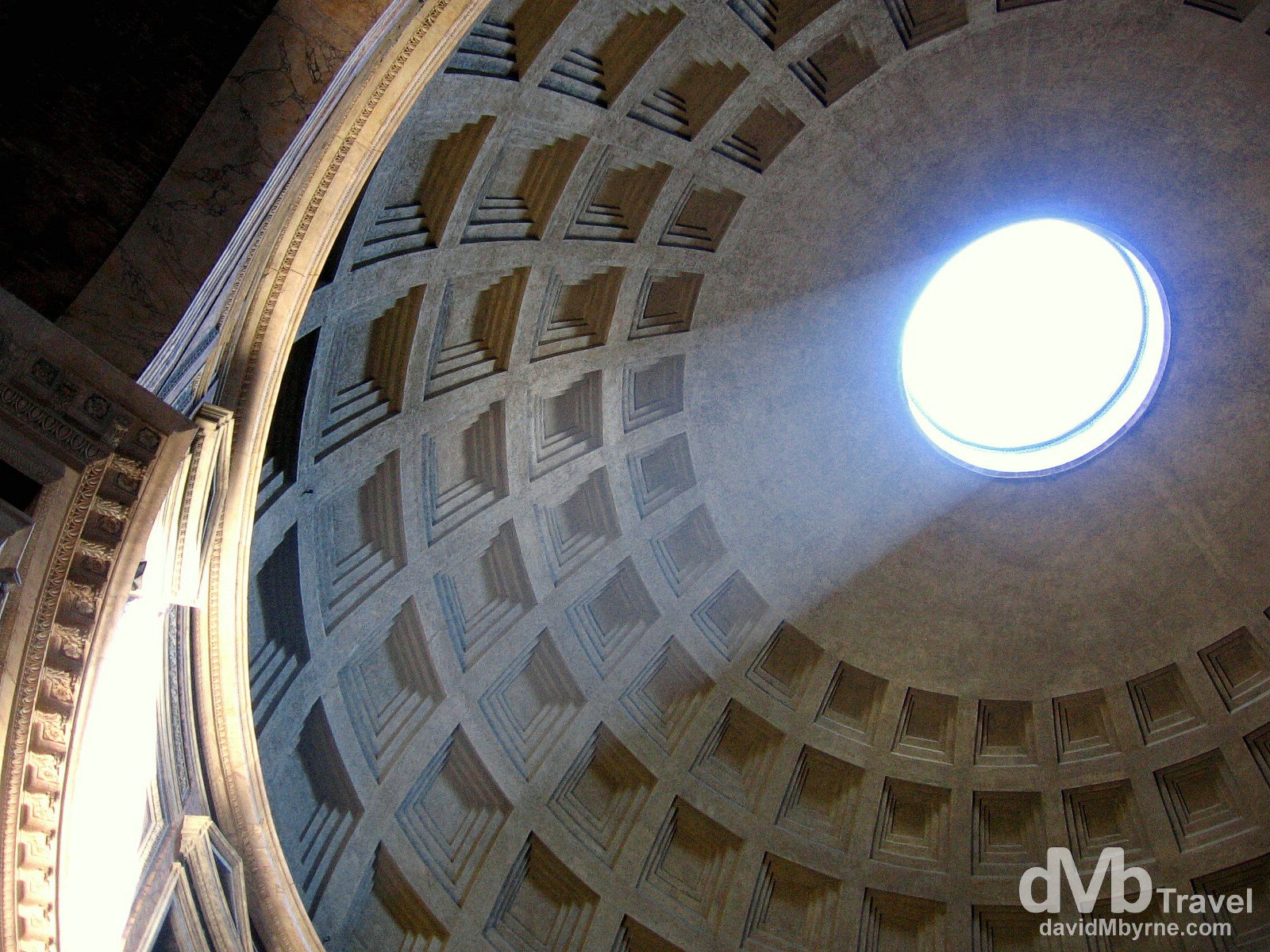
An upward shot of light rays shining through the hole in the dome of the Pantheon, easily the most complete ancient Roman structure in the city and, along with the Colosseum, visually the most impressive. It was originally built as a temple in around 27 BC but it was entirely rebuilt by the Emperor Hadrian and finished around the year 125 AD. The Pantheon dome is an architectural marvel, even by today’s standards – its 43-metre diameter is precisely equal to its height with no visible arches or vaults to hold the whole thing up. Instead the supports are sunk into the concrete of the walls of the building. It held the record for the largest dome in the world for some 1300 years and even today is still the largest unreinforced solid concrete dome in the world. To give some perspective, the hole in the centre of the dome, from which shafts of sunlight descend to illuminate the musty interior, is a full 9 metres across. Most Italian kings are buried here as is Raphael (1483-1520), the great Italian Renaissance painter. The Pantheon, Rome, Italy. September 1, 2007.
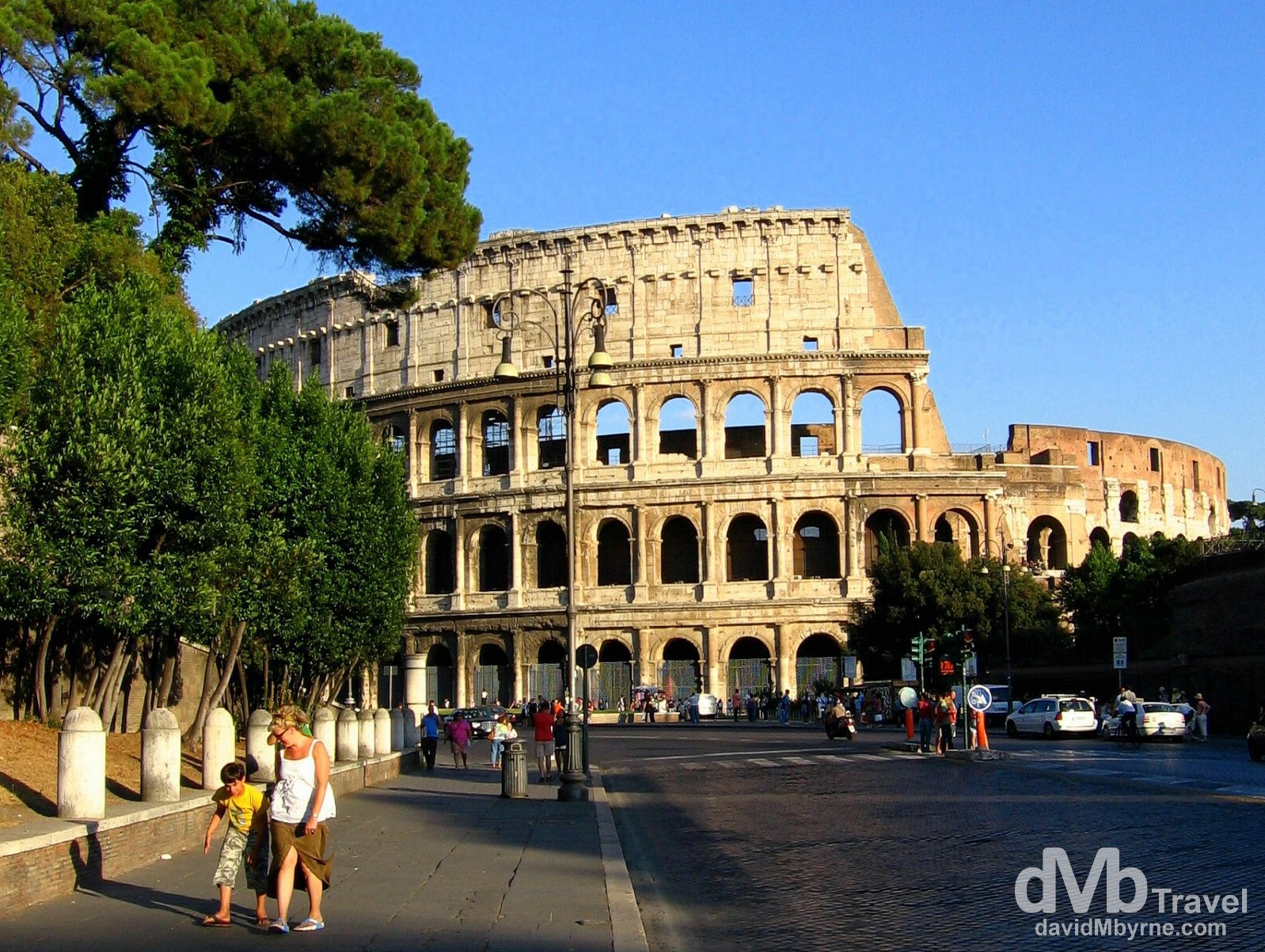
Here it is, my very first view of the fabled Colosseum from Via della Fori Imperiali, Rome. September 1, 2007.
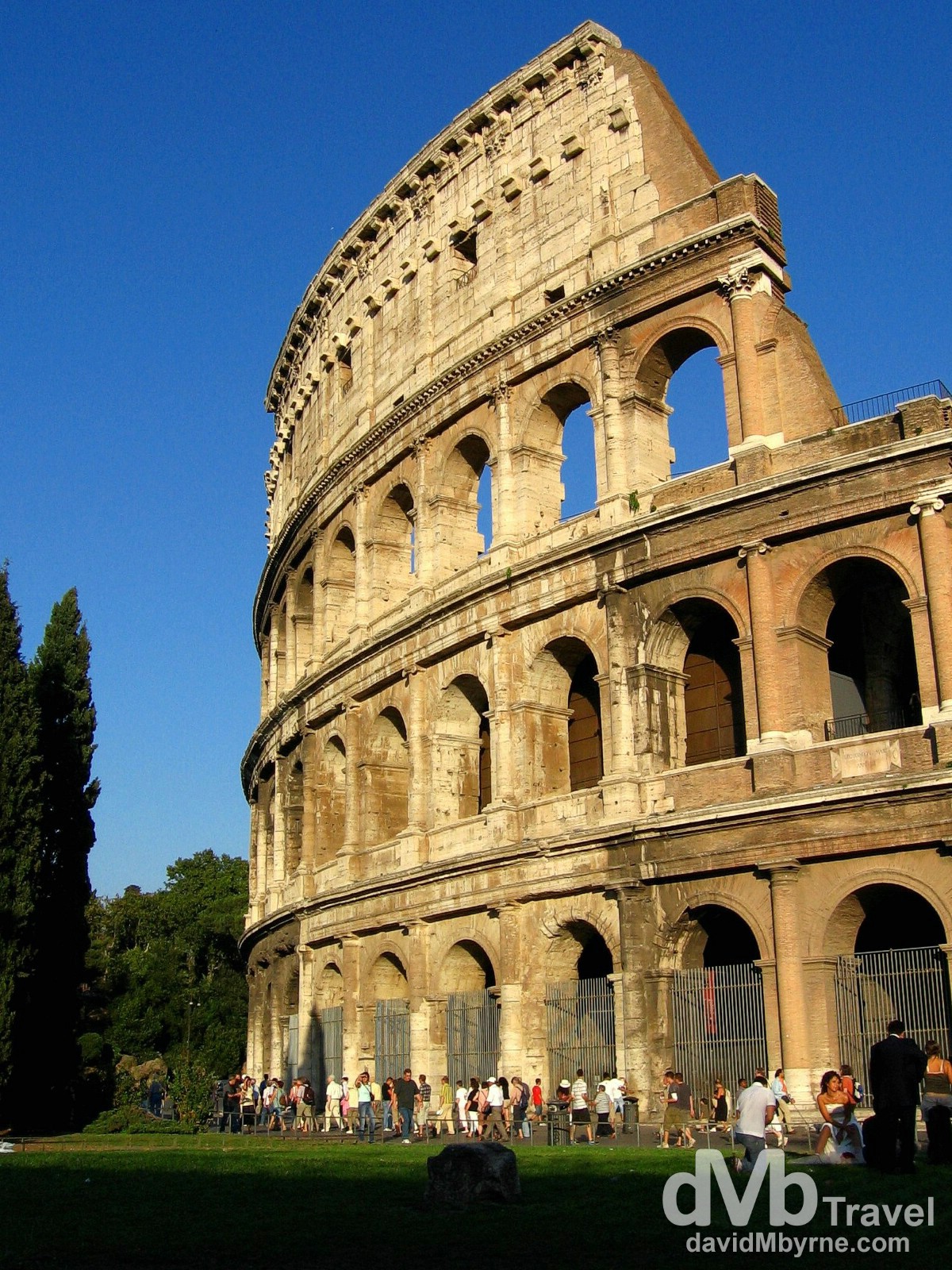
Walking by a section of the external facade of the Colosseum. I decided to postpone paying the €11 asking price to enter what is probably the world’s most famous amphitheater until the following day, instead spending an hour or so on this evening circling the exterior of the structure as the sun was setting. The lighting was gorgeous & oh-so soft. Colosseum, Rome, Italy. September 1, 2007.
Day 2 || Ancient, Dusty Rome
I spent yesterday day walking around The Roman Forum, a densely packed area of the city littered with Roman ruins (a lot) older than most countries, and taking another, proper look at the Colosseum, all the while trying to imagine what it would have been like to have lived here over 2000 years ago, wear a toga and watch the spectacle in the Colosseum. I came right back to reality in the evening when organising onward travel (by train, not chariot) to Naples, my next stop in Italy further down the Italian Tyrrhenian Sea coast.
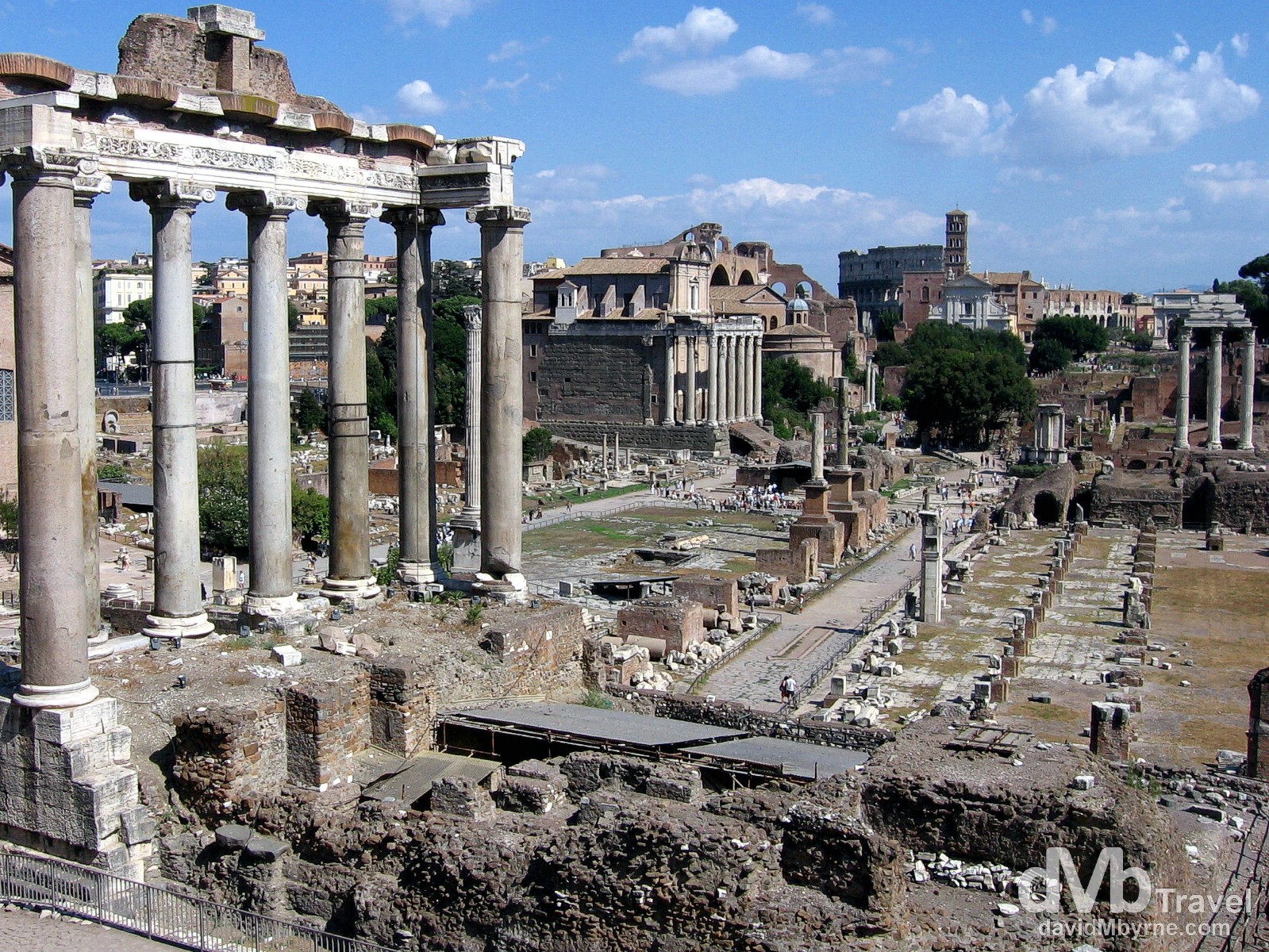
An overview of the ancient Roman Forum, a 5 acre section of central Rome around which ancient Rome developed. Julius Caesar himself walked around here and was responsible for the development of many of its buildings, now long since in ruin. Once the political, religious and social centre of the vast Roman world, today it survives as one of the most compelling sets of ruins anywhere in the world, even if you do need a little imagination and a little knowledge of history to appreciate it. The ruins within the forum clearly show how buildings and urban spaces were utilized during the Roman Age, an approach that has been copied in the layout of virtually every city in the world since. Trailblazers indeed those Romans. Roman Forum, Rome, Italy. September 2, 2007.
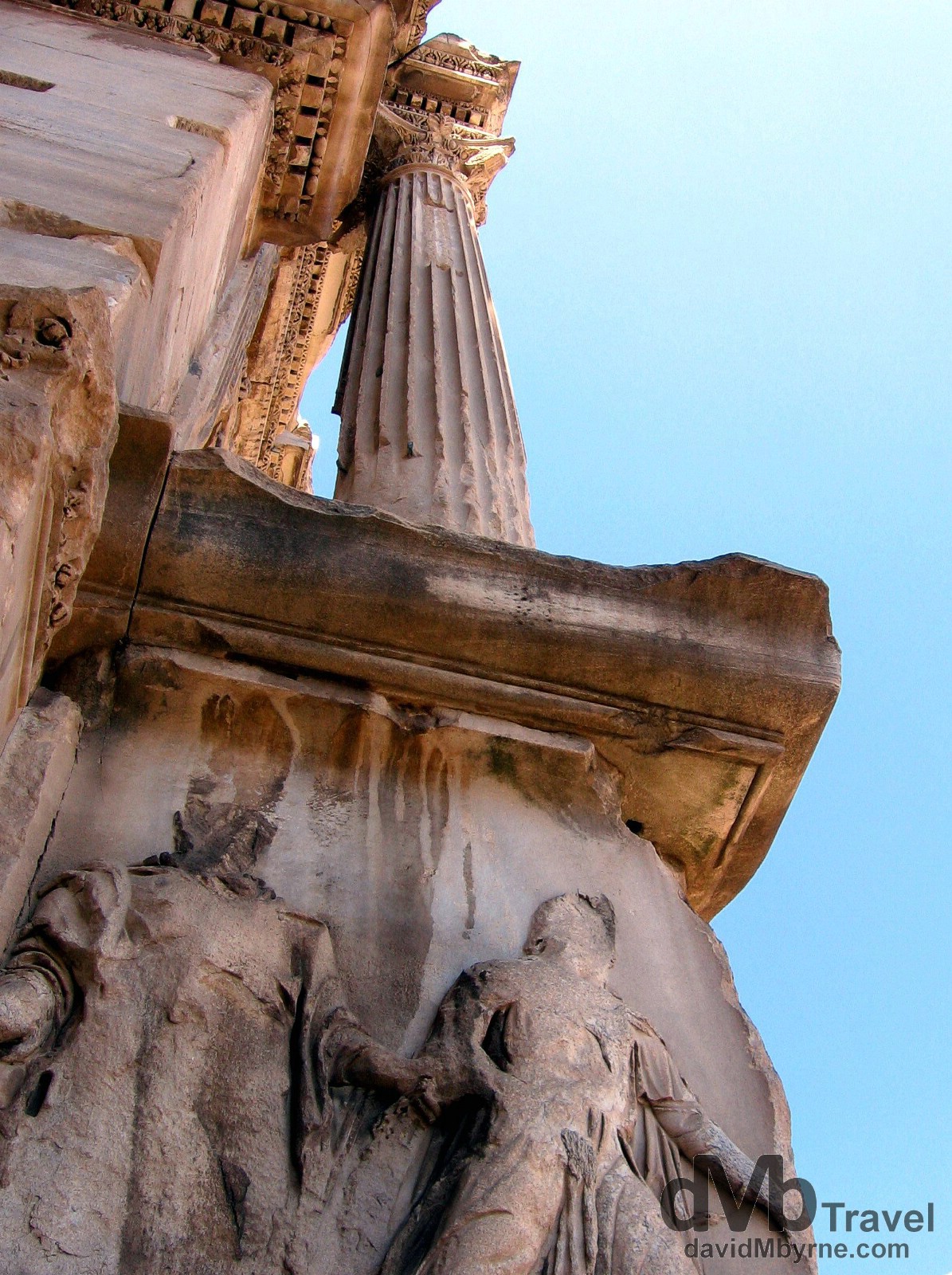
A section of the remains of the Arc di Settimo Severo in the Roman Forum. Erected in 203 AD to honour the Emperor and his sons, it is considered one of Italy’s major triumphal arches. Roman Forum, Rome. September 2, 2007.
The Colosseum, Take II
After shaking off the dust from the Forum it was back to the Colosseum a short walk away, this time to take a look at its interior.
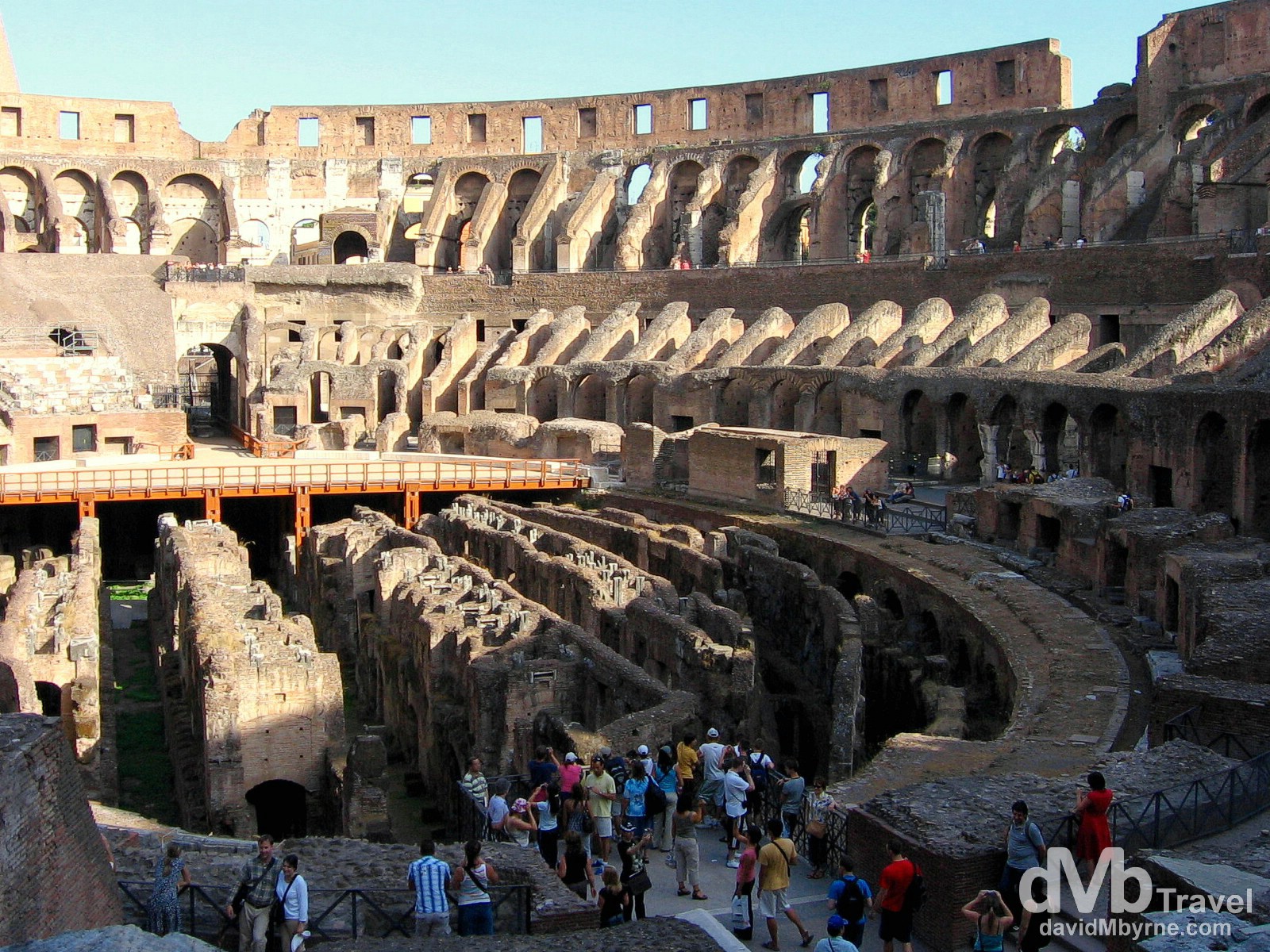
The Colosseum is an architectural marvel, one that despite the depredations of nearly 2000 years of earthquakes, fires, riots, wars and, not least, plundering for its seemingly inexhaustible supply of ready-cut travertine blocks, still stands relatively intact – a recognisable symbol not just of the city of Rome, but of the entire ancient world. It’s not much more than a shell now, eaten away by pollution and cracked by the vibrations of cars and the metro, but the basic structure is easy to see, one that has served as a model for stadiums around the world ever since. Originally known as the Flavian Amphitheatre (the name Colosseum is a much later invention), it was begun around 72 AD by the emperor Vespasian. Inside there was room for a total of around 60,000 people seated and 10,000 or so standing. The seating was allocated on a strict basis, with the Emperor and his attendants naturally occupying the best seats in the house, and the social class of the spectators diminishing as you got nearer the top (where interestingly I found the structure was rife with ancient graffiti etched into the stone showing that graffiti has been a problem in Italy since the Roman days). The lower reaches of the Colosseum housed, as seen here, a labyrinth which was covered with a wooden floor. The floor was punctuated at various places for trap doors that could be opened as required and lifts to raise and lower the animals that were to take part in the gladiatorial games the Colesseum hosted. The floor was covered with canvas, to make it waterproof, and covered with several centimetres of sand to absorb blood. The inside of the Colosseum, Rome, Italy. September 2, 2007.
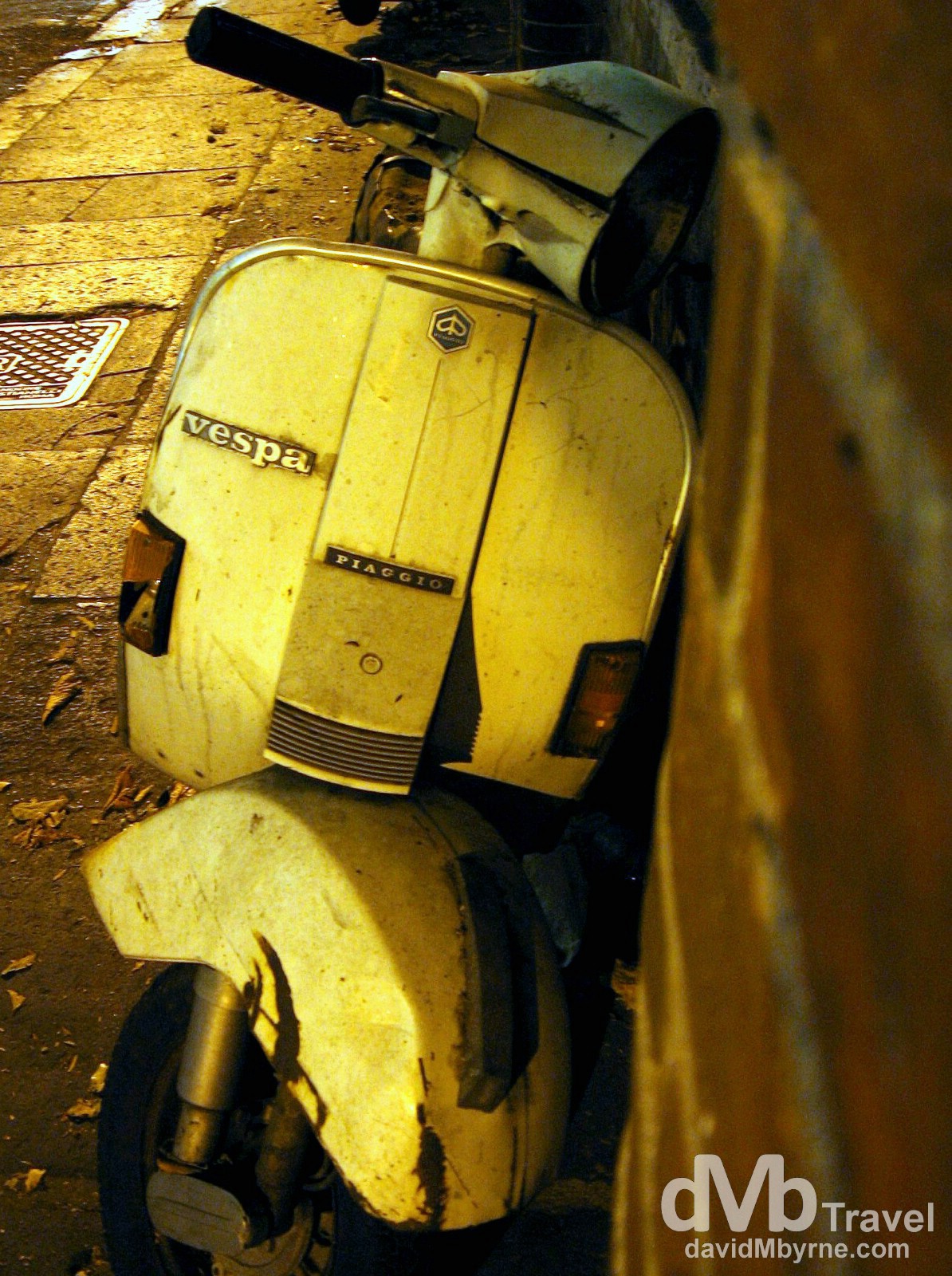
A Piaggio Vespa on the streets of Rome, Italy. September 2, 2007.
Day 3 || Papal Rome/Vatican City
Day 3 saw me return to Vatican City where I spent the day touring the now open, not to mention exhaustive, Vatican Museums, probably the best complex of museums anywhere in the world. Check out the Vatican City entry for more.

